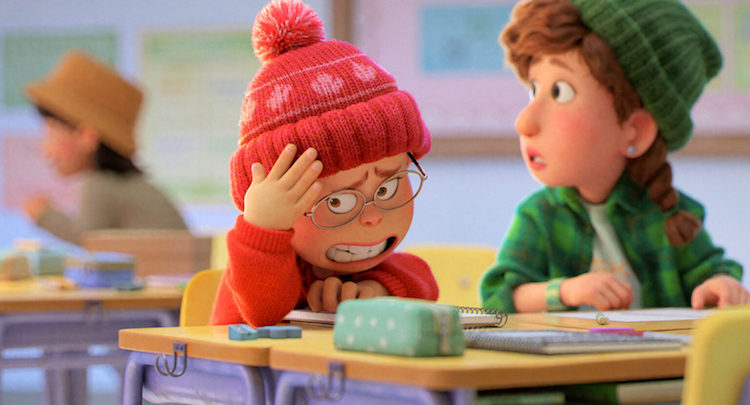
Movie Review: Turning Red
What We Liked
What We Didn't Like
In theory, there is not much difference between Turning Red and many other children’s films.
The latest from Pixar is about a young girl who develops a new ability and has to learn to harness it, all while avoiding conflict with her clueless parents. Any number of family movies — including Luca (2021), Pixar’s previous release — work from this template.
But in practice, Pixar takes Turning Red into areas rarely seen in this subgenre. It is a weird, clever and very funny exploration of the messiness and confusion of adolescence, filtered through the lens of a 13-year-old Chinese girl in 2002 Toronto. It is one of the most inventive films of the year, and the best Pixar film since Inside Out (2015).
Mei Lee (Rosalie Chiang) is content to hang out with her friends, obsess about popular boy band 4 Town, and do her best to pass her classes and honor her mother (Sandra Oh). But shortly after her 13th birthday, just as the hormonal rushes are beginning to set in and her mother embarrasses her at a local convenience store, Mei learns of a peculiar side of puberty that school didn’t prepare her for: When she loses control of her emotions, she turns into a giant red panda.
Just in case audiences don’t get the point, director Domee Shi (who co-wrote the story with Julia Cho) ladles in several gags of Mei’s mom thinking another teenage landmark has occurred, further embarrassing Mei by bringing sanitary pads to her school, as if Shi is getting ahead of critics and audiences by saying, “yes, this is a metaphor for exactly what you think it is.”
It’s likely to rankle a few parents who won’t like their kids being exposed to anything remotely adult, and I assume the film will also raise a few eyebrows with its depiction of Mei’s boy craziness. But it’s handled well, and it’s a smart approach. Shi captures not only the physical discomfort of adolescence but also the internal confusion, elation and shame that accompany that hormonal rush. Turning Red may wrap up its metaphor in a cuddly bundle of fur, but it ably portrays the inconvenience and frustration of puberty, and how that leads to exciting discoveries and unexpected conflicts.
Shi directs with hyper-specificity, leading to a unique tone for a Pixar film and the announcement an exciting new voice (Shi also directed the charming short “Bao” a few years back). The film burrows into the head of a young girl, constantly enraptured by a dreamy boy band, distracted by a flood of emotions, and clinging to a friend group that understands her when her parents don’t. The film is energetic and colorful, filled with anime-inspired flourishes and cuddly grace notes, punctuated with sharp visual gags.

Rosalie Chiang in “Turning Red.” © 2021 Disney/Pixar. All Rights Reserved.
Mei is an amusing and original Pixar heroine, a bit over-caffeinated and torn between her perfectionism and the rush of excitement she feels when she’s with her friends. Turning Red effectively mines emotion from Mei’s fear of disappointing her mother, and doesn’t provide a tidy conclusion to that relationship. Instead, the film embraces the awkwardness of adolescence and the truth that getting older will inevitably put distance between parents and children. It also allows Mei to discover that perfectionism is a trap, and joy can be found navigating the sides of life that are more chaotic, confusing and messy.
While the film’s focus is firmly on Mei, Turning Red never feels closed off or inaccessible. Rather, as all great art does, it uses the specific to communicate universal truths. Many in the audience will never have been a Chinese-Canadian girl in 2002, but the vast majority can relate to the confusion and emotional rush of adolescence, as well as parental conflict and struggles with perfectionism. And its themes of embracing individuality are in line with Pixar’s thematic legacy.
There was a time when Pixar could be depended on to put out challenging, creative and excellent work every year. In the last decade, the studio has stumbled creatively with an over reliance on sequels and some undercooked premises. But the film’s last releases, Soul (2020) and Luca, have shown some of the originality and vision that its classics were known for. Turning Red is prime Pixar, and one of the best films of 2022 thus far.



